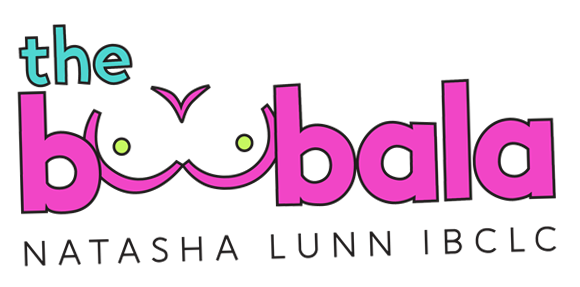Page Content
- What is the temperature danger zone for milk?
- How to know if breast milk is spoiled?
- What is the 5 5 5 rule for breast milk?
- At what temperature is milk no longer safe?
- What temp is too high with mastitis?
- How to tell if a bottle is too hot?
- What is the 120 pumping rule?
- What temperature is too high for milk?
- At what temperature does breastmilk lose nutrients?
- What temperature is too hot for breast milk?
Understanding the Temperature Limits for Breast Milk
Breast milk is a vital source of nutrition for infants, and its handling requires careful attention to temperature to preserve its quality and safety. Knowing what temperature is too high for breast milk is essential for parents and caregivers to ensure that the milk retains its nutritional and immunological benefits.
Optimal Temperature for Breast Milk
Breast milk is typically stored and served at temperatures that are close to body temperature, around 98.6°F (37°C). This is the ideal temperature for feeding, as it mimics the natural warmth of milk straight from the breast. However, when it comes to warming breast milk, there are specific temperature thresholds that should not be exceeded to maintain its quality.
Temperature Thresholds
Research indicates that breast milk begins to lose its nutritional value when warmed to temperatures above 104°F (40°C). At this point, the milk is considered warm, but it is still within a range that can be acceptable for feeding. However, as the temperature rises, the deterioration of breast milk’s quality accelerates significantly. When breast milk reaches 125°F (52°C), the rate of quality loss increases markedly, and this temperature is often described as hot but not scalding .
Risks of High Temperatures
Exceeding these temperature limits can lead to a loss of essential nutrients and beneficial properties in breast milk. For instance, heating breast milk to boiling point or excessively high temperatures can destroy vital nutrients, including antibodies that are crucial for an infant’s immune system. Therefore, it is critical to avoid methods that can cause uneven heating, such as microwaving, which can create hot spots and lead to overheating.
Best Practices for Warming Breast Milk
To safely warm breast milk, caregivers are advised to use methods that gently heat the milk without exceeding the recommended temperatures. This can include placing the bottle in a bowl of warm water or using a bottle warmer designed for this purpose. The goal is to achieve a temperature that is comfortable for the baby, ideally within the 99°F to 105°F (37°C to 40°C) range, which is still considered lukewarm and safe.
Conclusion
In summary, the key takeaway for parents and caregivers is to be mindful of the temperature when warming breast milk. Keeping the temperature below 104°F (40°C) is crucial to preserving its nutritional integrity. By following these guidelines, caregivers can ensure that they provide the best possible nutrition for their infants while minimizing the risk of nutrient loss.
What is the temperature danger zone for milk?
When temps creep above 40 degrees F for two hours or more, most dairy foods, like milk, yogurt, and cottage cheese, should be discarded.
How to know if breast milk is spoiled?
Human breast milk can spoil just like any other kind of milk. This leads to a sharp, sour smell and flavor. There’s no way to save spoiled milk. You should be able to tell it’s spoiled by tasting a sip of it yourself.
What is the 5 5 5 rule for breast milk?
Something I recommend to moms is the 5-5-5 rule. Try and use milk within five hours at room temperature, five days in the fridge, and by five months in the freezer.
At what temperature is milk no longer safe?
Prevention. Choose pasteurized milk and dairy products, making sure to read labels carefully. Refrigerate perishable foods at 40°F or colder to slow bacterial growth. Bacteria can multiply rapidly if left at room temperature or in the “Danger Zone” between 40°F and 140°F.
What temp is too high with mastitis?
Skin redness, often in a wedge-shaped pattern. The redness may be harder to see on Black or brown skin. Feeling ill. Fever of 101 degrees Fahrenheit (38.3 degrees Celsius) or greater.
How to tell if a bottle is too hot?
If mixing formula, water that is 110 degrees Fahrenheit or less can be mixed directly with the formula, given a safe water source. Always test the milk on the inside of your wrist before serving it to a child. If it feels warm, it is too hot. Always dry the outside of the bottle before serving.
What is the 120 pumping rule?
The first 12 weeks of your breastfeeding journey requires frequent breastmilk removal, stimulating healthy milk production. Studies show moms who exclusively pump for a minimum of 120 minutes per day can make enough to feed their babies primarily breastmilk.
What temperature is too high for milk?
Harmful bacteria can grow rapidly in milk above 40F. Refrigerate milk promptly after purchase and each use. Infants, pregnant mothers, the elderly and the immune compromised are most susceptible to spoiled milk.
At what temperature does breastmilk lose nutrients?
According to this study by Sharron Bransburg-Zabary, breastmilk should not be overheated to temperatures higher than 104 degrees Fahrenheit (40 degrees Celsius), otherwise it could compromise the nutrient quality.
What temperature is too hot for breast milk?
104 degrees Fahrenheit
To warm your milk, place the breast milk bottle or bag into a cup, jug or bowl of lukewarm water for a few minutes to bring it to body temperature (37 degrees Celsius or 99 degrees Fahrenheit). Alternatively, use a bottle warmer. Do not allow the temperature to go above 40 degrees Celsius (104 degrees Fahrenheit).’);})();(function(){window.jsl.dh(‘HS5oZ5OJBbja1sQP7_HWgAw__30′,’

